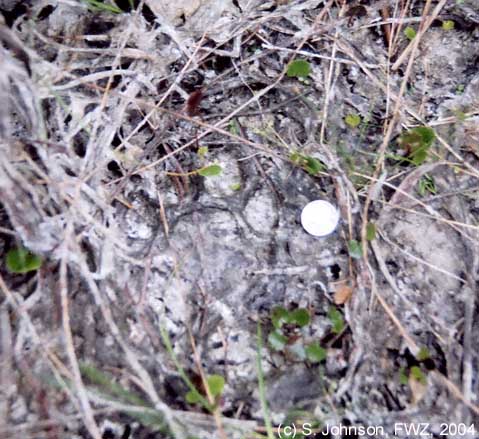|
|
Yucatán, Mexico |
 |
Beginning
on the Rancho El Zapotal near the northern coast of
the state of Yucatán in Mexico, this is the
first scientific study of jaguars near the Ría
Lagartos Biosphere Reserve.
Pronatura Peninsula de Yucatán, a non-governmental
conservation organization based in Mérida,
purchased this 2,700-hectare former cattle ranch in
2002 for the purpose of initiating land conservation
outside government-managed property.
Inviting
partnerships with organizations sharing its goals
of sustainable land use and preservation of biodiversity,
Pronatura has joined forces with the Instituto
de Ecología of the Universidad Nacional
Autónoma de México and the Fort
Worth Zoo to begin a study of jaguar population density
in February, 2004.
|

|
Shown
above, from left to right, are Stacey Johnson, Fort
Worth Zoo, Juan Carlos Faller, Pronatura Peninsula
de Yucatán, and Cuauhtémoc Chávez,
Instituto de Ecología UNAM.
|

Camera sites
are first plotted on a detailed map of the area and
then located on the ground using GPS. We mount the cameras
to trees in areas where wildlife is known to travel
through the forest. Film is collected for developing
every two to four weeks, and cameras are moved to new
sites every four weeks. Over a six-month period, more
than 100 square kilometers will be studied. |
Using
camera "traps" equipped with an infrared sensor
to photograph animals as they pass, information on the
movements, identification and activity of jaguars can
be recorded without physically capturing the animals.
The project actually began collecting data on February
12, 2004, and in its first season will work through July,
2004.  |

Jaguars
and pumas are known to live in the immediate area.
Tracks and other markings are regularly found.
(The coin
used as a size reference is a nickle.)
|
|
Yet
only a few patches of undisturbed forest remain in the
region outside the Ría Lagartos Biosphere Reserve.
Learning about and protecting the habitat of jaguars,
this ecosystem's top predator, will help maintain it
for all its inhabitants - including people. |
|
|
| |
|
Camera
trap photos from Mexico will be posted to this website.
Click
here to share the excitement
with us as the project unfolds!
|
|
<

|
|
|
| |
| |
|

